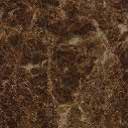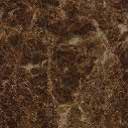chAPter 12 aniMal Manures
per acre is needed to maintain soil organic matter (table
The Influence of Manure on Many Soil Properties
12.2). As discussed above, a nitrogen-demanding crop,
such as corn, may be able to use all of the nitrogen in 20
The application of manures causes many soil changes—biological,
chemical, and physical. A few of these types of changes are indicated
to 30 tons of manure. If more residues are returned to
in table 12.2, which contains the results of a long-term experiment in
the soil by just harvesting grain, lower rates of manure
Vermont with continuous corn silage on a clay soil. Manure counter-
acted many of the negative effects of a monoculture cropping system
application will be sufficient to maintain or build up soil
in which few residues are returned to the soil. Soil receiving 20 tons of
organic matter.
dairy manure annual y (wet weight, including bedding—equivalent to
An example of how a manure addition might bal-
approximately 8,000 pounds of solids) maintained organic matter and
CEC levels and close to the original pH (although acid-forming nitrogen
ance annual loss is given in figure 12.1. One Holstein
fertilizers also were used). Manures, such as from dairy and poultry, have
“cow year” worth of manure is about 20 tons. Although
liming effects and actual y counteract acidification. (Note: If instead of
the solid manure, liquid had been used to supply N and other nutrients
20 tons of anything is a lot, when considering dairy
for the crop, there would not have been anywhere near as large a benefi-
manure, it translates into a much smaller amount of
cial effect on soil organic matter, CEC, and pore space.)
solids. If the approximately 5,200 pounds of solid mate-
High rates of manure addition caused a buildup of both phosphorus
rial in the 20 tons is applied over the surface of one acre
and potassium to high levels. Soil in plots receiving manures were better
aggregated and less dense and, therefore, had greater amounts of pore
and mixed with the 2 million pounds of soil present to
space than fields receiving no manure.
a 6-inch depth, it would raise the soil organic matter by
Table 12.2
about 0.3%. However, much of the manure will decom-
Effects of 11 Years of Manure Additions on Soil Properties
pose during the year, so the net effect on soil organic
Application Rate (tons/acre/year)
matter will be even less. Let’s assume that 75% of the
Original
Level
none
10 tons
20 tons 30 tons
solid matter decomposes during the first year, and the
Organic matter
5.2
4.3
4.8
5.2
5.5
carbon ends up as atmospheric CO2. At the beginning
CEC (me/100g)
19.8
15.8
17.0
17.8
18.9
of the following year, only 25% of the original 5,200
pH
6.4
6.0
6.2
6.3
6.4
pounds, or 1,300 pounds of organic matter, is added
P (ppm)*
4.0
6.0
7.0
14.0
17.0
to the soil. The net effect is an increase in soil organic
K (ppm)*
129.0
121.0
159.0
191.0
232.0
matter of 0.065% (the calculation is [1,300/2,000,000]
Total pore
space (%)
ND
44.0
45.0
47.0
50.0
x 100). Although this does not seem like much added
* P and K levels with 20 and 30 tons of manure applied annual y are
organic matter, if a soil had 2.17% organic matter and
much higher than crop needs (see table 21.3A, p. 249).
3% of that was decomposed annually during cropping,
Note: ND = not determined.
Sources: Magdoff and Amadon (1980); Magdoff and Villamil (1977).
the loss would be 0.065% per year, and the manure
addition would just balance that loss. Manures with
lower amounts of bedding, although helping maintain
for the crop being grown in the current year. It might
organic matter and adding to the active (“dead”) por-
be better for building and maintaining soil organic
tion, will not have as great an effect as manures contain-
matter to apply manure at higher rates, but doing so
ing a lot of bedding material.
may cause undesirable nitrate accumulation in leafy
crops and excess nitrate leaching to groundwater. High
USINg MANURES
nitrate levels in leafy vegetable crops are undesirable in
Manures, like other organic residues that decompose
terms of human health, and the leaves of many plants
easily and rapidly release nutrients, are usually applied
with high N seem more attractive to insects. In addition,
to soils in quantities judged to supply sufficient nitrogen
salt damage to crop plants can occur from high manure
133
Building SoilS for Better CropS: SuStainaBle Soil ManageMent







